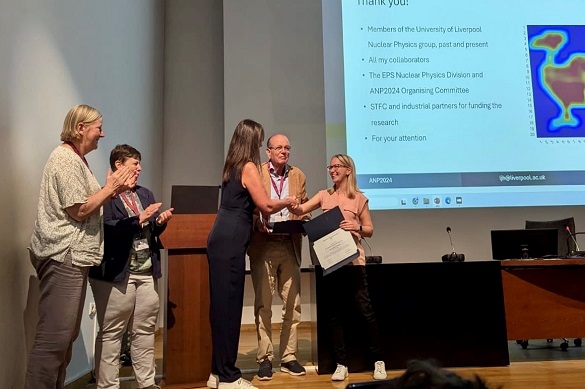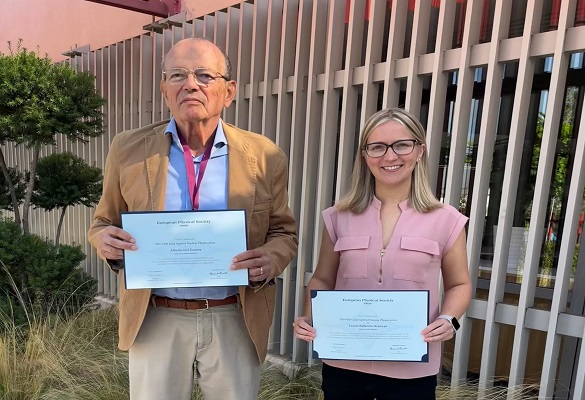
University of Liverpool Professor in Nuclear Physics and Associate Pro-Vice Chancellor for Research & Impact for Science & Engineering, Professor Laura Harkness-Brennan, has been awarded the European Physical Society (EPS) Nuclear Physics Division Prize for Applied Nuclear Physics.
Professor Harkness-Brennan has been honoured “in recognition of her outstanding contribution to the application of advanced gamma-ray spectroscopy together with imaging technology and techniques to the areas of nuclear medical imaging, homeland security, nuclear decommissioning and environmental monitoring.”
She was presented with the award at a special ceremony held during the Applied Nuclear Physics International Conference, which took place in Thessaloniki, Greece this week.
On receiving her award, Professor Harkness-Brennan said: “I am delighted to receive this new award from the European Physical Society. It is a real honour that the quality and significance of my work in gamma-ray spectroscopy and imaging has been acknowledged in this way by colleagues from across Europe.”

Professor Harkness-Brennan is an internationally recognised researcher in the field of nuclear physics. She heads up a research team developing novel radiation detection and imaging techniques for medical physics and nuclear structure physics experiments.
She has a long track record leading and co-leading several large UK and international research collaborations, including the European AGATA nuclear physics project.
Professor Harkness-Brennan also established the STFC Cancer Diagnosis Network+, a multidisciplinary community with academic, clinical and industry members aiming to collaboratively address clinical challenges in the diagnosis of cancer.
Professor Harkness-Brennan was jointly awarded the Applied Nuclear Physics prize alongside Alberto Del Guerra at the University of Pisa.

Created in 1968, the European Physical Society aims to promote physics in Europe and members include 42 National Physical Societies in Europe, individuals from all fields of physics, and European research institutions.